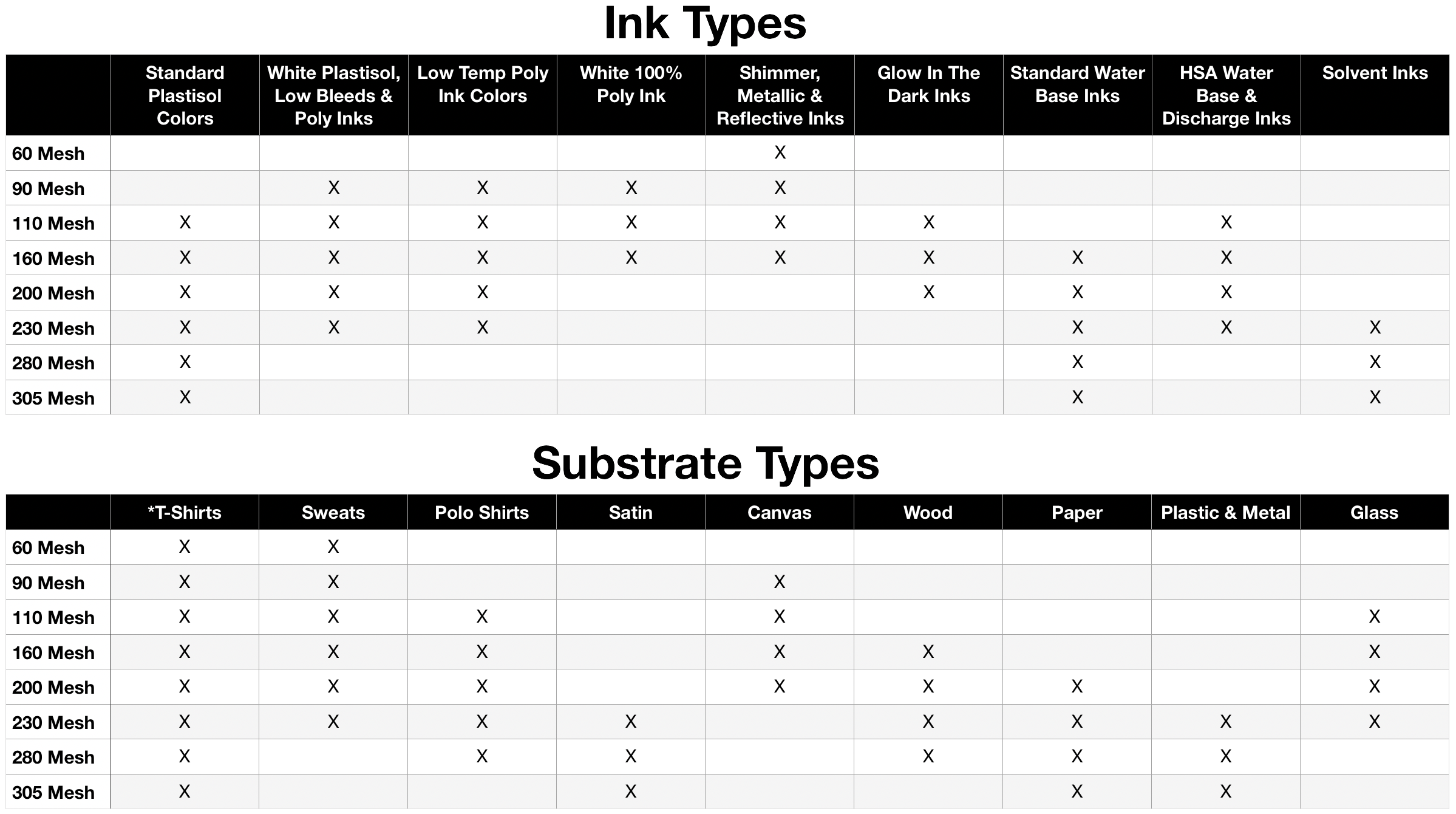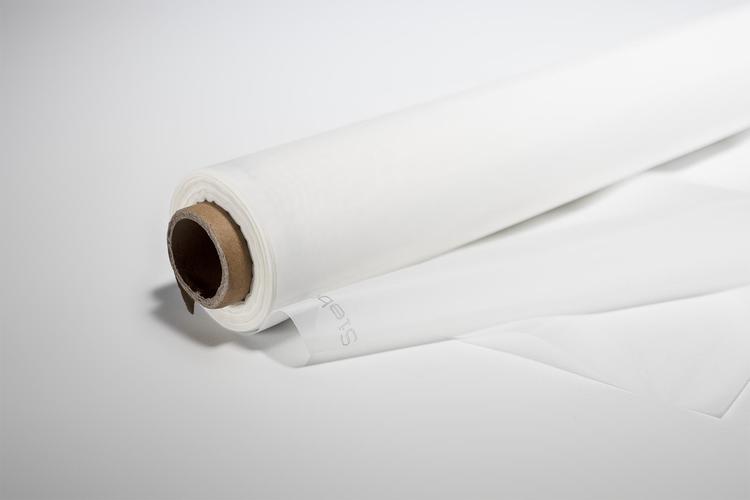Screen Printing Mesh Supplier
All of our screen printing mesh is of the highest quality and you will find the best screen printing mesh for your work at very affordable prices.You can receive our polyester screen printing mesh in different finesse from 6T(15 Mesh) to 165T(420 Mesh)
- 60-90 Mesh - Most commonly used for thick specialty plastisol inks, such as metallics, shimmers, reflectives, puffs, etc.
- 110 Mesh - Most common mesh count for printing with white plastisol ink. Not recommended for water base inks.
- 160 Mesh - Our most popular mesh count. Works well with a wide variety of ink types and su bstrates.
- 200-230 Mesh - Most commonly used for high detail artwork. Also great for printing with water based inks on wood or paper.
- 280-305 Mesh - Used for super fine detail artwork, half tones, CMYK process printing, as well as solvent and water base inks.
Many people pick their mesh count solely based off the amount of detail in their artwork, but this is wrong. It is more important to first consider the type of ink you are using, since all inks have very different viscosities. White plastisol ink for example is very thick, so you need a more open mesh count to allow the ink to pass through. On the contrary, black water based ink is extremely thin and needs to go through a finer mesh screen to prevent the ink from bleeding.
Different materials absorb different amounts of ink, so different mesh counts should be used to achieve best print results. Fleece, for example, tends to soak up a lot of ink, so a lower mesh count like 110 or 160 is often used to allow for better ink coverage. On the flip side, paper is not very porous at all, so you want to print a very thin layer of ink to prevent the ink from bleeding. For paper, you usually want to use a minimum mesh count of 200.
Now that you've considered the type of ink you will be using and the material you are printing on, it is time to consider the artwork detail. If for example you are printing with white plastisol (thick viscosity) on black cotton shirts (medium absorbency), you'll likely be looking at a range of mesh counts from 110-230. If your artwork is not very detailed and has big blocky portions, you should probably stay on the lower side of this range, so 110. If your artwork is very detailed and consists of a lot of fine lines and small text, you should be on the higher side of this range, so 230.
Below is a chart breaking down common ink types and garment/substrate types to get you in the right mesh count ballpark.

Tags:
